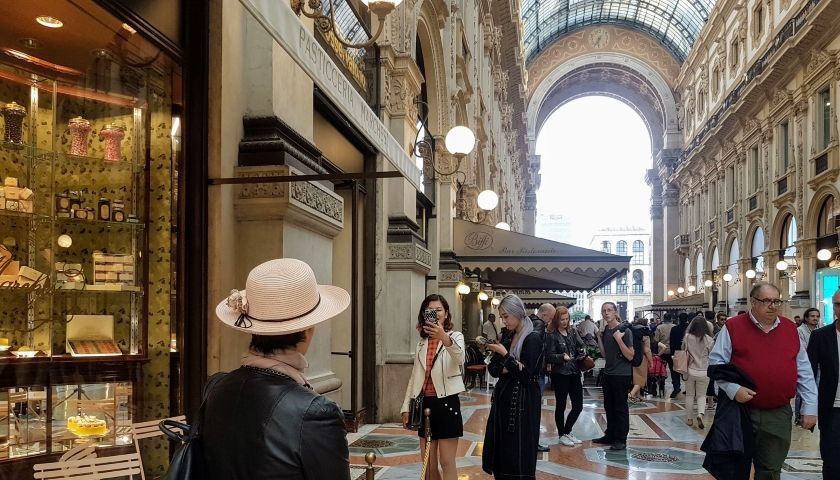With thousands of years of culture and a prominent place in history, Milan is among Italy’s great cities and, as such, is filled with art, architecture, and monuments of note at almost every juncture. The Milan Cathedral, the largest Gothic cathedral in the world, dominates the city center as does the impressive Galleria Vittorio Emanuele II next door. The nearby Sforza Castle is an impressively daunting size, and of course no trip to Milan would be complete without shopping. Keep reading as we unveil our recommendations for the best things to do in Milan.
It's worth getting away from the central fashion strip to explore some of Milan's characterful quartieri. The Brera neighborhood northwest of the Duomo is a classy laid-back area full of cafés, antique shops, quirky left-field boutiques, and art-supply stores. To the southwest, the Navigli district takes its name from the network of canals that once gave landlocked Milan an outlet to the River Po and the sea; today, the area has an artsy, neo-Bohemian vibe, with funky clothes shops, artists' studios, craft workshops, and plenty of happening trattorias, bars, and nightclubs to choose from.
Authentic, Expert-Approved Things To Do In Milan
With so much to do, see, and eat, it's hard to know how best to plan out your itinerary for optimal sightseeing—whether it's your first time visiting or your fifth. This list of the best things to do in Milan is a great place to start. But remember—no list of things to do can compare to a custom-built itinerary from Nancy Aiello Tours. Leave it to the Italy experts to build a daily travel plan from scratch just for you—complete not only with must-see sights and hidden gems, but also transportation, and accommodation.
1. Enjoy The Galleria Vittorio Emanuele II
The historic gallery arcade completed in 1877 is the oldest shopping mall in the world and retains some of the most spectacular architecture and paintings you’ll find in Milan. You should have a visit not only for the Flagship stores of prestigious names hosted but also because of the several famous cafes and restaurants located in the building.
2. See The Duomo di Milano
Milan's Duomo it's the fourth-largest church in the world and one of Europe's great Gothic cathedrals. Begun in 1386 and consecrated in 1418, the Duomo was a work in progress for centuries (the facade was only completed early in the 19th century, under the orders of Napoleon). To fully appreciate the wealth of exterior ornament—and for a fine view over the city—take the elevator to the roof. The highest of the estimated 3,400 statues is the famous Madonnina, a four-meter-tall, gilded copper Virgin Mary, touchstone and protectress of the city.
3. Explore The Neighborhood Of Brera
Formerly a working-class neighborhood, Brera has transformed into a hub for artists and bohemians—it’s a must-see if you’re visiting Milan. Located between the Santa Maria delle Grazie and the Duomo, its narrow streets are packed with restaurants, cafes, and boutiques selling ladies clothing, bric-a-brac, and antiques. Don’t forget to look up as you stroll around—people who live in the buildings above the shops adorn their balconies with flowers. You’ll also find what is arguably Milan’s best art museum here: the Pinacoteca Brera.
4. Visit One Of Italy's Most Important Art Collections At Pinacoteca di Brera
Milan's most worthwhile picture gallery is housed on the upper story of the city's still-functioning art academy. Take time over rooms six to nine of this chronological collection, home to some real Renaissance gems, including Andrea Mantegna's Dead Christ (a dazzling exercise in foreshortening), Giovanni Bellini's moving Pietà, and Tintoretto's dynamic Miracle of Saint Mark. The paintings, which were recovered from churches and monasteries once suppressed by the Napoleonic regime, include also standout canvases from the likes of Titian, Raphael, Piero della Francesca, and Veronese.
5. See The Monuments At Sempione Park
Opened after the unification of Italy more than 100 years ago, Parco Sempione has a 3.5 km route dotted with stunning monuments, from the Castle of Milan to the Arch of Peace—it's also adjacent to the Sforza Castle gardens. It’s the largest park in the city and, while fairly touristy, is worth a visit, especially if you're a runner (there are some great laps for a casual jog or long run).
6. Visit Sforzesco Castle
This 15th century castle was built by Duke of Milan, Francesco Sforza, and was later renovated and enlarged in the 16th and 17th centuries. It is one of the largest fortresses in Europe, complete with round battlements, defensive walls (designed by Leonardo da Vinci), a central courtyard, and expansive gardens. Today, it houses museums and galleries with sculptures by Michelangelo and paintings by Titian and Bellini.
7. Visit Milan's Famous Opera House, Teatro Alla Scala
The likes of Pavarotti have performed at the Scala, Milan's iconic Opera House and one of the most famous neoclassical opera houses in the world. It's also home to La Scala Theatre Chorus, La Scala Theatre Ballet, and La Scala Theatre Orchestra. Either purchase an entrance ticket during the day (there's an attached museum) or splurge on an evening performance, where you’ll experience the opera house in all its luminous glory.
8. Explore Navigli's Beautiful Canal & Bars
Taking its name from the neighboring Naviglio Grande canal, Navigli/Darsena is a young, trendy neighborhood where fashionistas rub elbows with bohemians at the casual-chic shops, street markets, hip bars, and flower-filled courtyards. This is a fabulous place for aperitivi and cocktails, especially at Bar da Rita, which is tucked away on Via Angelo Fumagalli around the corner from the canal.
9. Visit Milan's Second Oldest Church, Parrocchia di San Satiro
Tucked between the chain stores on via Torino, the Church of Santa Maria presso San Satiro is home to a must-visit sight: a brilliant trompe-l’oeil by master architect Donato Bramante. When you enter the church, you might assume the gilded apse at the end of the barrel-vaulted nave stretches back for at least two or three meters. But when you get up close, you'll see that it's just 97 centimeters deep. It’s a striking example of the magic of illusion and the visionary discoveries of the Renaissance period.
10. Visit Milan's Design Museum, La Triennale di Milano
Erected in the 1930s, this lofty pavilion on the edge of the Parco Sempione gardens, might just be Milan's best kept secret. Originally built for a triennial art show, hence the name, the renovated space now plays host to temporary exhibits of contemporary art and architecture. In this beautiful setting you will also find a restaurant and two cafes.
11. Shop Along Via Fiori Chiari
For boutique antique shops, there's no better spot than Via Fiori Chiari, a pedestrian street lined with colorful flower displays, street markets, galleries, cafés, and live music bars. If you can make it there on the third Saturday of the month, keep an eye out for the antiques fair.
12. See Renaissance Masterpieces At The Pinacoteca Ambrosiana
Pinacoteca Ambrosiana is home to an incredible collection of Renaissance masterpieces donated by Cardinal Federico Borromeo in 1618 (shortly after he founded the Biblioteca Abrosiana in 1607). Here, you’ll find art such as The Adoration of the Magi by Titian, The Musician by Leonardo, and Vases of Flowers by Jan Brueghel. Though much of the collection focuses on Renaissance paintings, there are works from the 17th, 18th, 19th, and 20th centuries on display. Located in old, Central Milan, this collection is a must-visit for art history lovers.
13. Visit The Brera Botanical Gardens
Part of the large cultural complex at Brera Palace, the Brera Botanical Garden is a lush, 5,000-square-meter oasis that boasts over 300 plant species. Originally conceived by the Jesuits as an orchard and a medicinal garden, it's divided into three sections of narrow flower beds, elliptical ponds, and a lawn surrounded by trees (including one of the oldest Ginkgo biloba trees in Europe). On the northern side of the garden is the gorgeous greenhouse that dates back to the 19th century. Admission is free.
14. Explore Vicolo Privato Lavandai
This tucked-away, historical corner of Milan on the banks of the Naviglio was a former laundry service, used by washerwomen until the 1950s to clean sheets and clothing—hence the name Vicolo dei Lavandai (street of the washers). To this day, you can still see the wooden seats and cement washing slabs, along with original fireplaces and wood-paneled ceilings. What most people don't realize, however, is that when the washers guild was first established in 1700, it was a guild for men, not women. There was even a male patron saint, St. Anthony of Padua. It wasn't until later that women took over washing duties.
If you have time, stop by Ristorante El Brellin for dinner or a drink—this building used to house the grocery shop that sold cleaning supplies to the women. The name, Brellin, references the wooden platform that the women would kneel on while washing.
15. Visit The 4th Century Church Dedicated To The Patron Saint Of Milan, Basilica di Sant'Ambrogio
Built in honor of Milan’s patron saint, Sant'Ambrogio Basilica—which dates back to the 4th century—is an archetype of Lombard Romanesque architecture. The unusual exterior features an enormous atrium almost as large as the church itself, while the interior houses an overwhelming collection of art from the Middle Ages, including a silver altar from the 9th century and a 10th century mosaic in the apse depicting Sant’Ambrogio’s connection to the city of Milan.
16. See The Chiesa di San Maurizio al Monastero Maggiore & Attached Roman Ruins
Originally attached to the most important Benedictine convent in the city, the church of San Maurizio al Monastero Maggiore now doubles as an archaeological museum. Dating back to the 1500s, the church itself has a humble façade that masks its ornate interior, where you’ll find spectacular frescoes by some of the most important Lombard artists of the 16th century, including Paolo Lomazzo and Ottavio Semino. On the archaeological side, you’ll notice ruins of the Roman circus on the monastery grounds; the old Roman walls form an important part of the Civic Archaeological Museum, whose entrance is next door.
17. Browse The High-Fashion Area Of Quadrilatero della Moda
The Quadrilatero della Moda is the fashion capital within the fashion capital: a shopper’s paradise comprising the long parallel streets of Via Montenapoleone and Via della Spiga, bordered by Corso Venezia to the south and Via Manzoni to the north. Via Montenapoleone (Montenapo for short), which runs along the western edge of the rectangle, is often considered the key street in the Quadrilatero, and it’s here where you’ll find the flagship outlets of most big designers, including Gucci, Prada, Versace, Chanel, and Valentino.
18. Visit The Piazza dei Mercanti
Piazza Mercanti is one of Milan’s oldest and most iconic central meeting areas. It's located in the heart of the ancient city between Piazza del Duomo and Piazza Cordusio. The square is an architectural treasure trove, with four distinct buildings that constitute its boundaries: the 13th-century Broletto Nuovo, the Gothic Palazzo dei Notai (“Notary’s Palace”), the Baroque, 17th-century Palazzo delle Scuole Palantine, and the 14th-century Logio degli Osii, where city officials used to address the public. Don't miss the statues by by Giovan Pietro Lasagna and Luigi Scorzini.
19. Stroll The Gardens & Admire The Architecture At Villa Necchi Campiglio
The cultured lifestyle of Milanese high society around the middle of the 20th century is brought vividly to life in this fascinating casa museo. Located a short stroll away from the fashion strip and yet immersed in greenery, the villa was designed by Fascist-era architect Piero Portaluppi for two sisters whose vast fortune derived from their family's sewing machine factory—they were the Singers of Italy. It's a fascinating mix of '30s rationalism and out-and-out luxury: In one of the bathrooms, there's a bench carved out of a solid block of lapis lazuli. Portaluppi's plan, later partly reworked in flouncy Venetian mode by Tommaso Buzzi, is surprisingly technological for its time, with double glazing, underfloor heating, and a system of flashing-light panels in the scullery so that servants knew exactly where in the house they were required. Two 20th-century private art collections are also on display here, both big on Italian artists of the metaphysical school, such as Mario Sironi and Giorgio De Chirico. Outside are the small swimming pool and a summer pavilion that has become a charming café, (it's a great insider spot for lunch). There are a variety of ways to experience the villa: take a tour of the house museums, stroll through the lush gardens, relax at the elegant café, and/or shop for literature, design, and food souvenirs at the stylish gift shop.
20. Explore The Trendy Isola Neighborhood
Isola has transformed over the years from a working class district secluded from the heart of Milan, into a vibrant, diverse area that exudes a neighborhood vibe. Here you'll find endless boutiques and specialty stores, along with colorful street art and markets. When you work up an appetite, make a beeline straight for Ratanà, one of the best restaurants in Milan that happens to be nearby. Helmed by Milan-born chef Cesare Battisti and his partner/sommelier Federica Fabi, the restaurant epitomizes modern Milanese cuisine. Not hungry for a full meal? Make a pit-stop at Artico Gelateria for a scoop of artisanal, handmade gelato.
21. See Da Vinci's Masterpiece, The Last Supper, At Santa Maria delle Grazie
Included in the UNESCO World Heritage sites list, the Santa Maria delle Grazie is a church and Dominican convent in Milan. Don't be fooled by its modest exterior—it houses one of the world's most famous paintings: Leonardo Da Vinci's The Last Supper. Note that this can only be viewed with a booking made at least three months in advance (slots tend to get snapped up very quickly). If you arrive at the Santa Maria delle Grazie in Milan expecting to see the painting without a reservation, you will not be able to.
22. Discover The Secret" Courtyards in Via Cappuccio
Via Cappuccio is a street where you can peek at the wonderful courtyards hidden behind the palace facades. Not to be missed is the courtyard of N.7: a magic cloister enclosed by two orders of columns with leafy Corinthian capitals. In the 15th century it was a convent, restored in 1915; Chiostro Cappuccio is a charming place with a rich history to explore.
 Rome & Vatican
Rome & Vatican Venice
Venice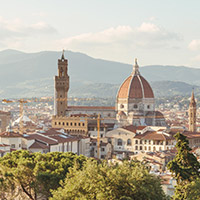 Florence & Tuscany
Florence & Tuscany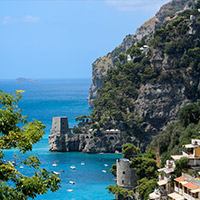 Napoli & Amalfi Coast
Napoli & Amalfi Coast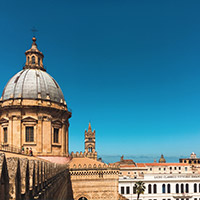 Sicily
Sicily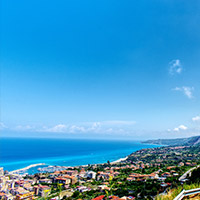 Calabria
Calabria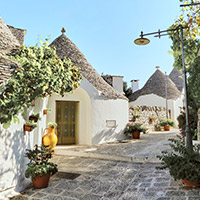 Matera & Puglia
Matera & Puglia